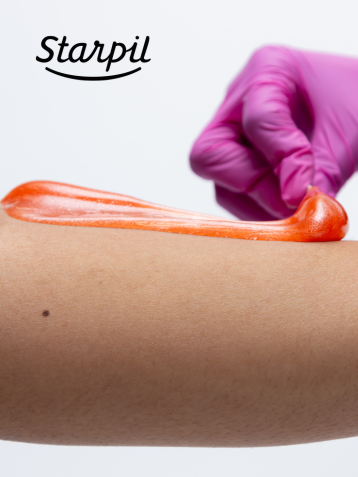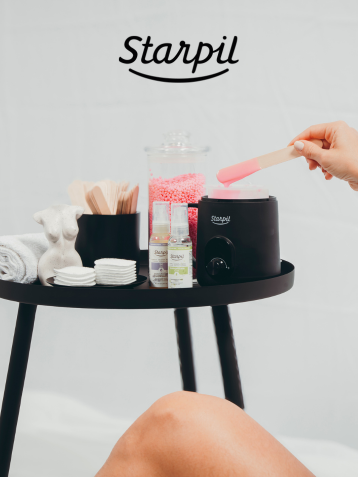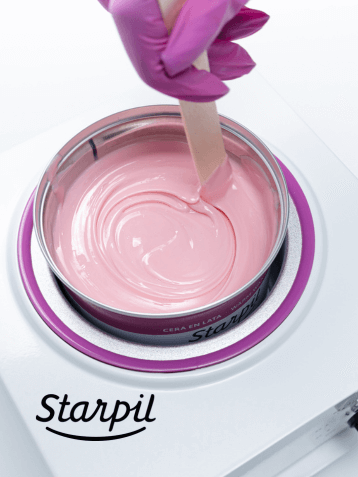Exfoliation After Waxing: When and How to Do It Right

Exfoliation is a crucial step in maintaining smooth, healthy skin after waxing. Proper exfoliation not only helps prevent ingrown hairs but also ensures that your skin remains soft and free of dead skin cells.
Table of Contents
Timing and technique are key to reaping the benefits without irritating freshly waxed skin. Before exfoliating post-wax, it’s important to understand why it matters and how to do it properly. In this guide, we’ll run you through everything you need to know to do it right.
READ: Waxing at Home: The Complete Beginner’s Guide
Why Exfoliation Matters After Waxing
Preventing Ingrown Hairs
One primary reason to exfoliate after waxing is to prevent ingrown hairs. Waxing removes hair from the root, but as new hair grows, it can sometimes become trapped under the skin, leading to ingrown hairs. Exfoliation helps by removing dead skin cells that can block hair follicles, allowing new hair to grow freely.
Maintaining Smooth Skin
Exfoliation also keeps your skin smooth and soft. By removing dead skin cells, you reveal the fresh, new skin underneath, which can make your waxing results last longer and look better.
Avoiding Buildup of Dead Skin Cells
Regular exfoliation prevents the buildup of dead skin cells, which can cause dryness and flakiness. This is especially important after waxing, as your skin might be more sensitive and prone to these issues.
READ: Post-Wax Care: Tips & Best Practices

When to Start Exfoliating After Waxing
Immediate Aftercare
Never exfoliate directly after hair removal. Right after waxing, your skin is more vulnerable and prone to irritation. It’s essential to give it time to heal before you start exfoliating. Typically, you should wait at least 24 to 48 hours after waxing before exfoliating. This allows any redness or inflammation to subside. If you’re prone to ingrown hairs, we recommend using the Starpil Ingrown Hair Serum to not only exfoliate but to dissolve ingrown hairs before they form.
Frequency of Exfoliation
Once your skin has had time to recover, you can start exfoliating regularly. For most people, exfoliating 2-3 times a week is sufficient. However, this can vary depending on your skin type. If you have sensitive skin, you may want to exfoliate less frequently, while those with oilier skin might benefit from more regular exfoliation.
READ: Can I Shower After Waxing?

How to Exfoliate Properly After Waxing
Choosing the Right Exfoliator
When it comes to exfoliating after waxing, gentle is the keyword. Avoid harsh scrubs or exfoliants that can irritate the skin. Instead, opt for a quality physical exfoliating product, such as a gentle scrub with fine particles or a chemical exfoliant containing ingredients like alpha hydroxy acids (AHAs) or beta hydroxy acids (BHAs). These exfoliants help to dissolve dead skin cells without being too abrasive.
Techniques for Effective Exfoliation
- Use a Gentle Motion: When exfoliating, use circular motions with light pressure. Avoid scrubbing too hard, as this can irritate your skin and cause redness or even microtears.
- Focus on Problem Areas: Pay extra attention to areas where you’re prone to ingrown hairs, such as the bikini line, underarms, or legs. However, be mindful not to over-exfoliate, as this can lead to irritation.
- Rinse Thoroughly: After exfoliating, rinse your skin thoroughly with lukewarm water to remove any residue from the exfoliant.
READ: Why Using Pre & Post-Wax Products is a MUST
Additional Tips for Post-Waxing Skin Care
Directly After Waxing
Directly after waxing, it’s important to apply Post-Wax Lotion and Post-Wax Oil to the skin to lock in hydration, remove residue, and moisturize it. The skin’s vulnerability post-wax will allow it to absorb these products more deeply and reduce the risk of irritation or inflammation.
Moisturizing Is Key
After exfoliating, it’s crucial to moisturize your skin to keep it hydrated and supple. Choose a non-comedogenic moisturizer that won’t clog your pores. Look for ingredients like aloe vera, chamomile, or hyaluronic acid, which are known for their soothing and hydrating properties.
Applying moisturizer regularly will help maintain the softness and smoothness of your skin between waxing sessions. We recommend using the Maystar Essentials Moisturizing Body Lotion to keep your skin smooth and supple.
Avoiding Irritants
In the days following your waxing session, try to avoid activities that can irritate your skin, such as swimming in pools or going to the beach, tanning, working out, or wearing tight clothing. These activities can cause irritation and increase the likelihood of developing ingrown hairs or other skin issues.
Exfoliating Before Your Next Wax
Remember to exfoliate 24-48 hours before your next waxing appointment. This preps your skin by removing dead cells and leaving your skin’s surface clear. This allows the wax to adhere better and makes hair removal more effective. It also helps reduce the risk of ingrown hairs post-wax.
READ: The Complete Guide to Leg Waxing

Final Thoughts
Exfoliation is a vital part of post-waxing skincare that helps keep your skin smooth, soft and reduces the risk of ingrown hairs.
By timing it right and using gentle techniques, you can maximize the benefits of your waxing session and enjoy long-lasting, beautiful results. Remember, your skin deserves the best care, so be gentle and consistent with your exfoliation routine.






Comentarios